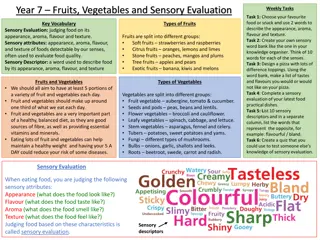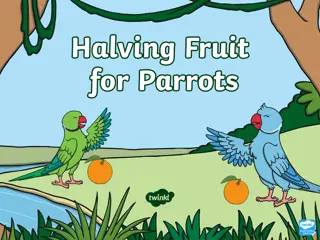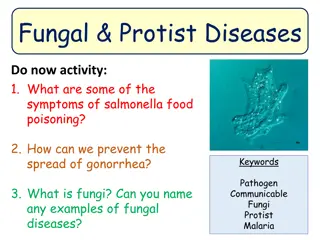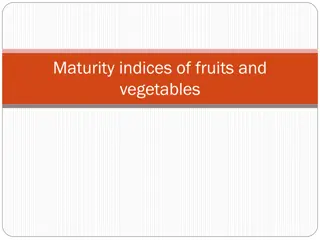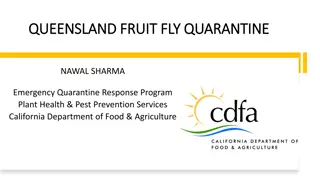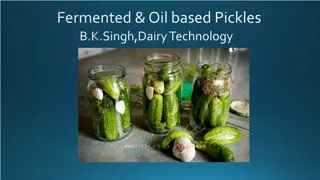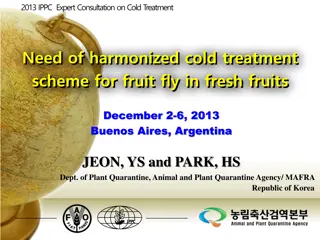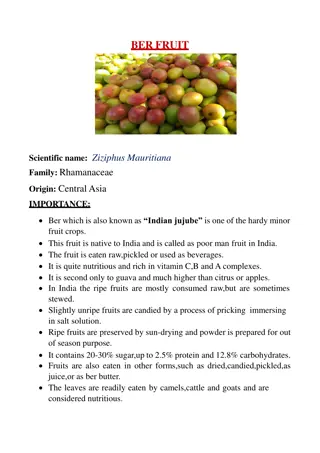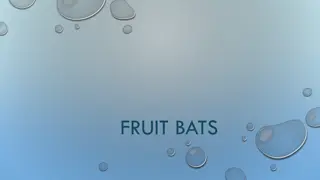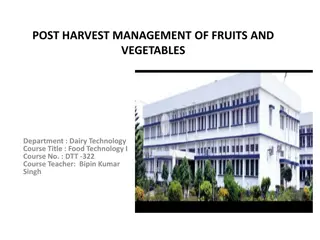Common Regulated Diseases in Imported Fruit and Vegetables
Imported fruit and vegetables can carry regulated diseases such as Citrus Black Spot, Citrus Scab, and Citrus Canker. These diseases affect citrus fruits and peppers, causing scabs, spots, and cankers, making the produce unmarketable. The pathogens causing these diseases have been intercepted in imports, with findings primarily from regions like South Asia and sub-Saharan Africa. It is crucial to monitor and regulate the spread of these diseases to protect agricultural crops.
Download Presentation

Please find below an Image/Link to download the presentation.
The content on the website is provided AS IS for your information and personal use only. It may not be sold, licensed, or shared on other websites without obtaining consent from the author.If you encounter any issues during the download, it is possible that the publisher has removed the file from their server.
You are allowed to download the files provided on this website for personal or commercial use, subject to the condition that they are used lawfully. All files are the property of their respective owners.
The content on the website is provided AS IS for your information and personal use only. It may not be sold, licensed, or shared on other websites without obtaining consent from the author.
E N D
Presentation Transcript
Regulated diseases commonly found on imported fruit and vegetables
Import interceptions There are comparatively few findings of regulated diseases on imported fruit and vegetables in comparison to findings of insect pests. In recent years the 2 main commodities in which we have found such diseases are a range of citrus fruit in which we find a range of fungal and bacterial diseases causing scabs, spots and cankers; and in sweet peppers and chillies (Capsicum) which we ve found to contain regulated viruses. The majority of findings in Citrus have been from South Asia, in particular Bangladesh, but also North Africa (e.g. Egypt) and Central and South America (Guatemala and Argentina) Most findings in peppers have been from sub-Saharan Africa, and in particular from East African countries, but also from China and Pakistan.
Regulated Citrus diseases Citrus black spot Phyllosticta citricarpa (fungus) Citrus scab Elsino fawcettii and Elsino australis (fungi) Citrus canker Xanthomonas axonopodis pv. citri (bacteria)
Guignardia citricarpa (Citrus Black Spot) Preferred name is Phyllosticta citricarpa EU Quarantine fungal pathogen Wide distribution around tropical and sub-tropical areas Primarily a disease of the fruit, the unsightly blemishes render the fruit unmarketable Takes it s name from the black pycnidia that form in the centre of mature spots
Citrus black spot symptoms Range of symptoms from early indentations to dark spots with pycnidia (dark fungal structures that are visible using a hand lens). Sometimes has green halos on lemons. Looking for sunken spots with greyish centre, with or without pycnidia, but always have brick red margins.
Elsino fawcettii & Elsino australis (Citrus Scab) EU regulated fungal pathogens Elsino spp. are only actionable from South America and only on Citrus sinensis and C. reticulata E. fawcettii is more widely distributed that E. australis Of the two, E. australis can be considered more economically significant as it affects species of citrus which are more widely grown (e.g. C. sinensis and C. reticulata) but does affect interior part of fruit E. fawcettii causes warty, irregular and deeply fissured scabs, whereas E. australis causes larger, smoother more rounded scabs Distribution of E. fawcettii (above and E. australis (below)
Citrus scab symptoms Top left and centre: Warty irregular scabs caused by E. fawcettii. The image in the centre shows the scab close up. Top right: Disease can just be on one side of the fruit can look like scorch, wind scarring or mechanical damage Bottom left: This could also be Citrus canker
Xanthomonas axonopodis pv. citri (Citrus canker) EU Regulated bacterial pathogen Distribution is wide-spread throughout Asia, South America, Africa and Oceania Potential to infect all Citrus species with varying degrees of susceptibility Causes raised, corky/spongy looking cankers on fruit which can be easily confused with Elsino (Citrus scab) or physical damage.
What can these diseases be confused with? Top left: Physiological associated with high humidity around time of harvest. Oil gland ruptures and damage the skin. Top right: Alternaria alternata (fungus) Bottom left and right: Melanose caused by Diaporthe citri (fungus)
Regulated viruses on Capsicum In recent years we ve seen an increase in consignments of Capsicum showing a range of potential virus symptoms. When tested we ve found a proportion of samples to contain regulated viruses. The majority of findings on imported chillies and peppers have been of non-European isolates of Potato virus Y from Africa, but we ve also found chilli vein mottle virus on chilli samples from China and Pakistan. Infected consignments have been destroyed.
Viruses on Capsicum peppers and chillies A range of symptoms, including mottling, discolouration and distortion of fruits can occur but are not diagnostic of a particular virus. Be on the look out for any of these symptoms and be aware that they could well be caused by a regulated virus.






